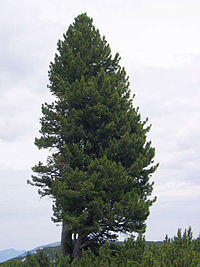
Multilocus phylogenetic analysis of Talaromyces species isolated from cucurbit plants in China and description of two new species, T. cucurbitiradicus and T. endophyticus
Sign Up to like & getrecommendations! Published in 2018 at "Mycologia"
DOI: 10.1080/00275514.2018.1432221
Abstract: ABSTRACT During a survey of endophytic fungi from cucurbit plants in China, 21 Talaromyces strains were isolated from ten symptomless plants. Phylogenetic analysis of the partial RNA polymerase II largest subunit gene (RPB2) showed that… read more here.
Keywords: cucurbit plants; plants china; two new; new species ... See more keywords

Occurrence and pathogenicity of Hop stunt viroid infecting mulberry (Morus alba) plants in China.
Sign Up to like & getrecommendations! Published in 2023 at "Plant disease"
DOI: 10.1094/pdis-08-22-1865-re
Abstract: To investigate the presence of hop stunt viroid (HSVd) in mulberry (Morus alba) plants in China, HSVd was detected by RT‒PCR using dsRNAs extracted from symptomatic or asymptomatic mulberry leaf samples collected from a mulberry… read more here.
Keywords: mulberry; hsvd; plants china; hsvd variants ... See more keywords

Commodity risk assessment of bonsai plants from China consisting of Pinus parviflora grafted on Pinus thunbergii
Sign Up to like & getrecommendations! Published in 2022 at "EFSA Journal"
DOI: 10.2903/j.efsa.2022.7077
Abstract: Abstract The European Commission requested the EFSA Panel on Plant Health to prepare and deliver a scientific opinion on the risk posed by bonsai plants from China consisting of Pinus parviflora grafted on Pinus thunbergii… read more here.
Keywords: bonsai plants; risk; pinus; thunbergii ... See more keywords

Apiaceae Medicinal Plants in China: A Review of Traditional Uses, Phytochemistry, Bolting and Flowering (BF), and BF Control Methods
Sign Up to like & getrecommendations! Published in 2023 at "Molecules"
DOI: 10.3390/molecules28114384
Abstract: Apiaceae plants have been widely used in traditional Chinese medicine (TCM) for the removing dampness, relieving superficies, and dispelling cold, etc. In order to exploit potential applications as well as improve the yield and quality… read more here.
Keywords: traditional uses; apiaceae medicinal; plants china; bolting flowering ... See more keywords